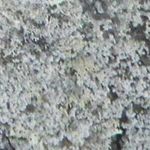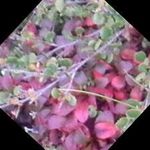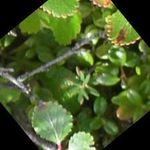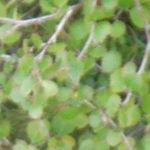Landcover classification using texture-encoded convolutional neural networks: peeking inside the black box
←
→
Page content transcription
If your browser does not render page correctly, please read the page content below
Spatial Knowledge and Information Canada, 2019, 7(6), 3
Landcover classification using texture-
encoded convolutional neural networks:
peeking inside the black box
MALIK KARIM COLIN ROBERTSON
Department of Geography and Environmental Department of Geography and Environmental
Studies, Wilfrid Laurier University Studies, Wilfrid Laurier University
malikkarim360@gmail.com crobertson@wlu.ca
patterns in the landscape. This finding
ABSTRACT suggests the potential generalizability of
texture-based CNNs and that classification
Pattern recognition, object detection, and errors associated with such models might be
image classification are typical areas in lower than that of traditional CNNs.
which contemporary computer vision
algorithms are being deployed. In high- 1. Introduction
resolution remotely sensed image
classification problems, texture features can Landcover classification is becoming
be crucial to the recognition of different increasingly vital and more sophisticated as
landcover classes. Using a classical remotely sensed data are now available at
convolutional neural network (CNN) and high temporal and spatial resolutions.
texture-encoded CNN variant, early Landcover information is crucial for
concatenation CNN (EC-CNN), we explore monitoring, and reporting on transitions in
the relevance of texture-based features in vegetation types across time and space
landcover classification. In this paper, we (Albert and Gonz, 2017). Remotely sensed
demonstrate the utility of using shallow image classification represents a domain in
layers of a CNN for learning discriminative which computer vision methods are now
local texture features in very high-resolution widely applied. Landcover type
images. We apply these models to a case discrimination is a typical task in which
study problem involving ground lichen machine learning algorithms are frequently
classification in a tundra ecosystem and deployed. The recent successes of artificial
found that the texture EC-CNN out- neural networks in object detection, pattern
performed the non-texture based classical recognition and scene classification tasks
CNN. Given that deep learning models are have resulted in growing interest in
often perceived as “black-boxes”, in order to exploring the capabilities of these models
illustrate how effective texture models (Hinton et al., 2012). While traditional
represent landcover features, we extract landcover mapping methods focus on
feature maps from each model to provide a spectral homogeneity of classes as the basis
visual interpretation of the texture patterns for discrimination, there are several cases
learned by the various models. The CNN where the spatial arrangement of features
model saliency maps contain more localized on the landscape is a key discriminant
patterns which are not easily interpretable, feature. Forest fragmentation, thermokarst,
visually. The EC-CNN model on the other and vegetation patterns in arid ecosystems
hand contain patterns that are more are all typically recognized by their texture
intuitive and representative of fine-grained (i.e., spacing and arrangement) rather than
textures. Furthermore, almost all filters in their spectral characteristics. Most
the model detected locally significant traditional classification techniques and2 Landcover classification using texture-encoded convolutional neural networks
classifiers are unable to achieve high boxes”, we adapt existing approaches to
accuracy in these settings due to high data compare activation feature maps from the
dimensionality and scale dependencies CNN models (Jacobs and Goldman, 2010;
(Basu et al., 2018). On recognizing this Selvaraju et al., 2017). The contributions of
limitation, there has been increasing this paper are therefore two-fold: (a) design
interest in approaching texture mapping of a simple texture-encoded CNN for
using ANN techniques (Lloyd et al., 2004). landcover classification, and (b) use of
Andrearczyk and Whelan (2016) found that computer vision techniques to visualize and
a texture explicit CNN model out-performed gain insight into how well the models learn
the state-of-the art models in texture texture patterns.
datasets. In a related study, Cimpoi and
Vedaldi (2015) demonstrated CNN models 2. Experimental methods
capability to detect textural classes in scenes
characterized by diverse texture categories .
2.1 Texture-encoded CNN model design
Research in landcover classification and
CNNs consist of filter banks capable of
landscape comparison has demonstrated
extracting hierarchical spatial features using
the potential of CNNs, especially in
a weight-sharing framework (Cimpoi et al.,
determining similarities in urban land use
2015). Texture analysis and synthesis has
patterns (Albert and Gonz, 2017). Despite
been implemented in CNNs and proven to
the level of improvements achieved using
represent discriminative local features
CNNs, the fact that higher hierarchical
(Gatys et al., 2015; Ustyuzhaninov et al.,
features are often used to perform
2016). Our design of a texture-based CNN is
classifications in classical CNNs raises
motivated by previous findings that lower-
questions pertaining to their
layers pool dense orderless features and
generalizability, transferability and error
capture relevant local patterns as compared
rate across domains, locations, and datasets.
to higher-layers which contain global shape
Higher-level CNN features or activations
information (Cimpoi et al., 2015). Our
lack geometric invariance, thus diminishing
approach is also inspired by Andrearczyk
their robustness and generalization power
and Whelan (2016) technique that derives
for classification and mapping across
an energy feature vector from the
variable scene configurations (Gong et al.,
penultimate pooling layer and concatenates
2014). Lower-layer feature maps however
them with the first fully connected layer.
contain significant local information that
capture texture and hence extracting and
In the context of landscape or landcover
concatenating such features could build
classification and similarity search, global
texture explicit models which are robust and
shape information present in fully
less prone to classification errors. Research
connected layers is of little relevance as
on the use of dense lower CNN features
spatial patterns often bear no uniquely
information in classification task is limited.
defined geometry across space and time.
This necessitates the specification of explicit
Our method encompasses the concatenation
texture models capable of learning and
of multi-layer features and learning a
accurately representing textured landcovers.
representation of the data generating
process concurrently. In the feature fusion
We specify a texture-encoded CNN for
framework, feature maps from three
feature extraction and classification of
hierarchical layers are concatenated; these
lichen for a landscape in a low-tundra
are subsequently flattened to feature vectors
ecosystem in Northwest Territories, Canada.
to construct the first fully connected (FC)
We further compare a classical CNN with
layer. Here, we attempt to derive a non-
that of our texture-based model. Given that
existing fully connected layer FC1 via
CNNs are to some degree, considered “black
merging features from all preceding layersLandcover classification using texture-encoded convolutional neural networks 3
(i.e., pool1, pool2, and pool3). The classical photographs from a study site at Daring
CNN is also designed in parallel to enable Lake, Northwestern Territories, Canada are
performance comparison with the texture used in this study. Spatial resolutions of the
CNN. Figure 1 depicts the architecture of a sample imagery are 0.05 cm and 1 cm for
classical CNN and a texture-encoded CNN. the ground photos and UAV, respectively.
The architecture of both CNNs (i.e., the size To generate the training samples, high
of hidden layers) is adapted from the VGG resolution ground-truth photos from the
model (Simonyan and Zisserman, 2014), study site were tiled into 225 × 225 patches
with slight modifications in the first and of homogenous landcover categories. We
second hidden layers to learn 96 features. also generated 225 × 225 non-homogeneous
Table 1.0 provides further information tiles comprising all the three vegetation
regarding the model architecture. categories. These are reserved for probing
into CNN layers to unravel what the models
have learned. The tile dimensions used are
significant enough to contain relevant
discriminative features in the 5 × 5 receptive
field of the CNN filters (Basu et al., 2015).
The lichen class contains 1300 samples
while the green and colored vegetation
a) categories comprise 1000 images in each
class, resulting in 3300 patches. The green
vegetation class mainly comprise sedges,
birch and alder shrubs and grasses, while
the colored vegetation category represents
primarily dwarf shrubs in the genus
Arctostaphylos (i.e., bearberry). Figure 2.0
depicts samples of the landcover classes.
The ground photos are used exclusively for
b) model training, and classification is
implemented on 450 × 450 tiles of UAV
Figure 1.0 A classical CNN (a) and a texture-based EC-CNN imagery. The rectified linear unit (ReLU)
(c)
method is employed in the convolutional
layers and fully connected layers to effect
Table 1.0 Models depth and layer structure non-linear input transformation. All images
are standardized to zero mean and unit
variance. Image standardization is essential
cov1 cov2 cov3 FC1 FC2 to mitigating the ReLU signal saturation
and ensuring convergence of the gradient
64×5×5 96×5×5 96×5×5 128 128 descent algorithm (Nair and Hinton, 2010).
ECCNN pl2×2, pl2×2, pl2×2, ×1 ×1 In training, the stochastic gradient
str 2 str 2 str 2 algorithm with cross-entropy cost function
is used. The learning rate, momentum and
64×5×5 96×5×5 96×5×5 128 number of iterations are set to 0.01, 0.9 and
CNN pl2×2, pl2×2, pl2×2, ×1 50, respectively. In order reduce overfitting,
str 2 str 2 str 2
a 50% drop-out is applied to both
convolutional and fully connected layers.
Shutting 50% hidden units (drop-out) is an
2.2 Sample preparation and model effective regularization technique for
training minimizing potential overfitting. The
Imagery from an unmanned aerial vehicle learning rate, and momentum were held
(UAV) as well as georeferenced ground unchanged. An epoch of 50 was selected4 Landcover classification using texture-encoded convolutional neural networks
after training the models for incremental its losses and accuracies peaking after 40
iterations of 20, 30, 40, and 50. The models epochs but do not exhibit clear stability. It is
performance did not improve appreciably possible that the CNN requires additional
after 40 epochs, thus the selection of 50 training time to learn. However, it should be
epochs for training both models. The noted that CNNs are susceptible to over
training, validation and test data comprise training, resulting in poor performance on
60%, 20% and 20%, respectively. The unseen data.
experiment is conducted with CPU
implementation using Keras + Tensorflow a) b)
in Python. Training duration is 9 hours on
i7-3930K CPU @ 3.20GHz, and 52.0GB
windows computer.
Figure 3.0 Training and validation history; classical CNN (a)
and a texture-based EC-CNN (b)
Figure 4.0(b-c) illustrates tundra vegetation
classification using the models. The maps
Figure 2.0 Samples of landcover types in the study site; appear to be difficult to distinguish visually,
lichen (first column), green vegetation (second column), and though close examination reveals some shift
colored vegetation (third column) in spatial distribution of the landcover
types, notably, the colored vegetation class.
In order to enable direct class comparison, a
3. Results and discussion difference map (Figure 4.0d) between 4.0b
and 4.0c is generated. It can be noticed that
The model accuracy reports on the test the models show large discrepancy in
sample are 97.50% and 96.52%, classifying the color vegetation class, while
respectively, for EC-CNN and CNN models; agreeing closely in lichen and green
this suggests a marginal improvement in vegetation prediction. It appears that the
performance of the texture-based model observed disagreement stems from shift in
compared to the classical CNN, and class allocation of pixels between the green
probably accounts for the close similarity in and color vegetation types. This may be
the classification results outputted by the explained by the fact that the two categories
models. A plausible cause of this slight contain predominantly similar textures.
difference in test accuracy can be attributed Hence the models are relying on spectral
to the relatively small training sample size signatures to discriminate. It must be
used. With sample size of 2640 (60% of emphasized that ground photos were mostly
3300) used in training and validation (20% samples from the similar locations as the
of 3300), the traditional CNN is likely to UAV images. Though the imagery come in
demonstrate competitive performance. different spatial resolutions, training on
Figure 3.0 shows training/validation losses ground photos and predicting vegetation
and training/ validation accuracies for both classes on UAV mitigates the effects of
models. It can be observed that the EC-CNN potential overfitting in training data being
losses and accuracies peak and stabilize transferred to the classification stage. This
after 25 epochs. The CNN on other hand has also tests as well as exposes the potentialLandcover classification using texture-encoded convolutional neural networks 5
generalizability of the models on an unseen
dataset.
Our approach to probing the performance of
the models in the classification of the
various landcover categories surprisingly Original Maps EC-CNN CNN
reveals that the texture-based model
prediction of the landcover types is visually a)
intuitive and interpretive; in fact, visual
inspection shows that the model has learned
relevant feature maps about lichen
composition and configuration, and that it is
easier for users to link, for example, what
the model thinks is lichen in the original b)
map to the class activation maps extracted
from layer three (cov3) of EC-CNN model.
This implies the model predictions may be
more robust and accurate despite the
competing performance seen in the CNN. In
Figure 5.0, class activation maps (CAM)
Figure 5.0. Class activation maps for Lichen. First column
extracted from lichen filters found in the shows sample UAV images, second column (EC-CCN model
models (cov3 layers) shed light on the CAM), and third column (C-CNN model CAM)
patterns learned by each model to
discriminate lichen. It can be observed that 4. Conclusion
the EC-CNN features are denser than the
CNN features which exhibit sparsity and In this paper, we demonstrate the
smoothness. robustness of texture-based CNN in a lichen
dominated tundra ecosystem classification
Original Maps EC-CNN CNN task. Using gradient-based class activation
a) b) c) maps as in (Selvaraju et al., 2017), we show
that our texture-encoded CNN can be more
effective and less error prone in
classification problems as its CAMs are
more intuitive and visually depict a
particular landcover class the model
d) predicts. Further research is essential to
Prediction agreement testing the accuracy of the texture model on
Green Vegetagtion
Color Vegetation
benchmark texture datasets. It is also worth
Lichen exploring the performance of different
architectures of the texture model. The
effectiveness of texture-based features in
change detection and landscape similarity
search is another research area worth
investigating.
Figure 4.0. Classification of UAV map (a), using EC-CNN
(b), CNN (c), and difference map (d) derived from (a) and
(b)6 Landcover classification using texture-encoded convolutional neural networks
Features Yunchao. In European
Conference on Computer Vision, 392–
407.
Acknowledgements Hinton, G. E., Srivastava, N., Krizhevsky, A.,
The authors acknowledge NSERC for Sutskever, I., Salakhutdinov, R. R.,
supporting this research. Yosinski, J., Lipson, H. (2012).
Improving neural networks by
References preventing co-adaptation of feature
detectors, 1–18.
Jacobs, D. E., & Goldman, D. B. (2010).
Albert, A., & Gonz, M. C. (2017). Using
Cosaliency : Where People Look When
Convolutional Networks and Satellite
Imagery to Identify Pa erns in Urban Comparing Images.
Environments at a Large Scale, 1357– Lloyd, C. D., Berberoglu, S., Curran, P. J., &
1366. Atkinson, P. M. (2004). A comparison
Andrearczyk, V., & Whelan, P. F. (2016). of texture measures for the per-field
classification of Mediterranean land
Using filter banks in Convolutional
Neural Networks for texture cover. International Journal of
Remote Sensing, 25(19), 3943–3965.
classification R. Pattern Recognition
Nair, V., & Hinton, G. E. (2010). Rectified
Letters, 84, 63–69.
Linear Units Improve Restricted
Basu, S., Ganguly, S., Mukhopadhyay, S.,
Boltzmann Machines. Proceedings of
DiBiano, R., Karki, M., & Nemani, R.
the 27th International Conference on
(2015). DeepSat-A Learning framework
Machine Learning, (3), 807–814.
for Satellite Imagery.
Basu, S., Mukhopadhyay, S., Karki, M., Simonyan, K., & Zisserman, A. (2014). Very
DiBiano, R., Ganguly, S., Nemani, R., & deep convolutional networks for large-
Gayaka, S. (2018). Deep neural scale image recognition. arXiv preprint
arXiv:1409.1556.
networks for texture classification—A
theoretical analysis. Neural Networks, Selvaraju, R. R., Cogswell, M., Das, A.,
Vedantam, R., Parikh, D., & Batra, D.
97, 173–182.
Cimpoi, M., Maji, S., & Vedaldi, A. (2015). (2017). Grad-CAM: Visual
Explanations from Deep Networks via
Deep filter banks for texture
Gradient-Based Localization.
recognition and segmentation.
Proceedings of the IEEE International
Computer Vision and Pattern
Conference on Computer Vision, 2017–
Recognition (CVPR), 2015 IEEE
Octob, 618–626.
Conference On, 3828–3836.
Ustyuzhaninov, I., Brendel, W., Gatys, L. A.,
Gatys, L. A., Ecker, A. S., & Bethge, M.
(2015). Texture Synthesis Using & Bethge, M. (2016). Texture Synthesis
Convolutional Neural Networks, 1–9. Using Shallow Convolutional Networks
Gong, Y., Wang, L., Guo, R., & Lazebnik, S. with Random Filters, 1–9.
(2014). Multi-Scale Orderless Pooling
of Deep Convolutional ActivationYou can also read



























































